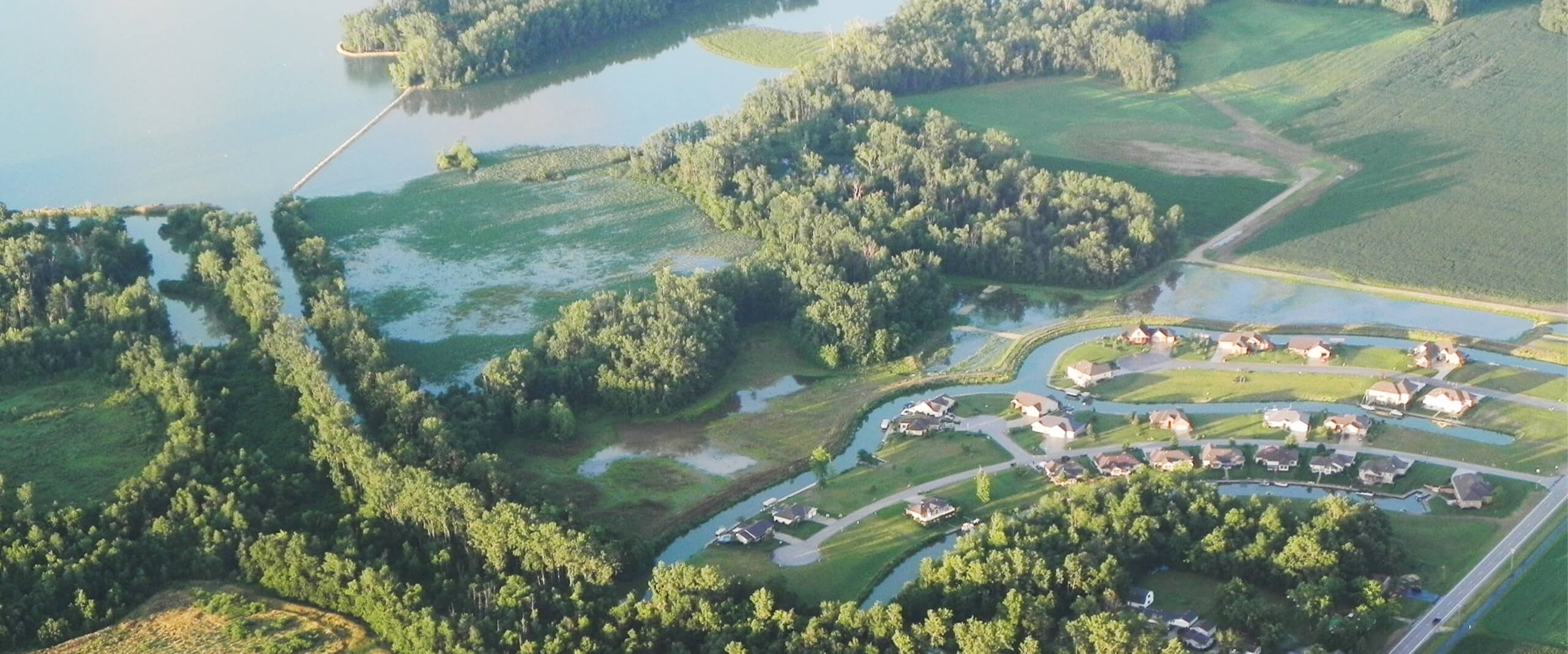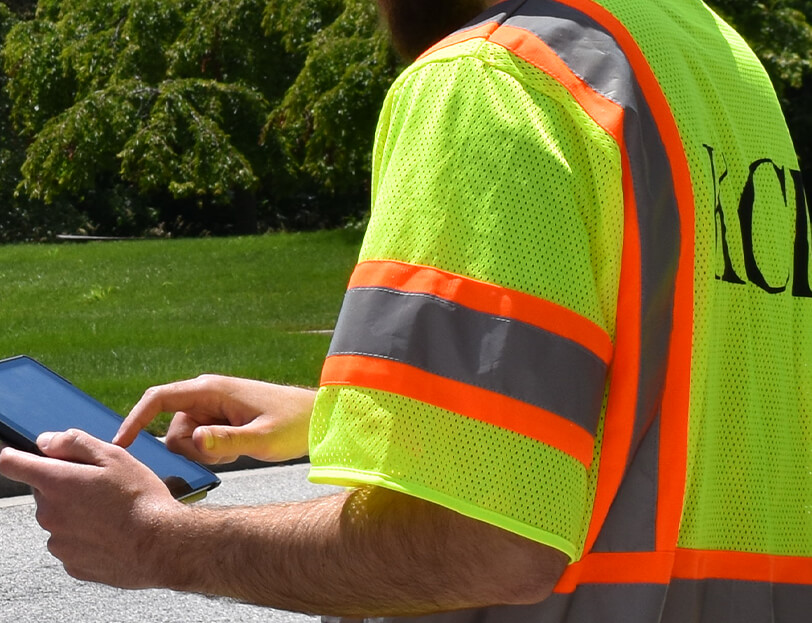KCI served as the General Engineering Consultant for the Grand Lake St. Marys Lake Restoration Commission.
Grand Lake St. Marys (GLSM) is a 21-square-mile lake supported by a 52-square-mile watershed in northwestern Ohio. As the health of the lake and its native habitats have thrived, so has the region. In recent years, the lake has felt the drastic cumulative effects of gradual land use changes related to both growth and development surrounding the immediate lake area and the agricultural industry boom within the watershed.
Because the GLSM is a major influence on the local and regional economy within Auglaize and Mercer Counties, impacts affected both recreational and economic activities. Although numerous plans to reduce the levels of pollution had been developed over the years, the lake’s water quality continued to suffer from nutrient inputs and other degradation issues leading to dangerous levels of algae microcystin toxin, which threatened public health and welfare. Algal blooms were of such a magnitude and duration during the summer of 2010, that the Ohio Environmental Protection Agency (OEPA) was forced to close the lake to all recreational activity. Overall, GLSM was on the verge of a functional breakdown and ecological collapse.
KCI developed a strategic plan that was formulated to provide a framework and timeline for restoration of Grand Lake St. Marys utilizing various projects and economic management tools to implement solutions for current and future improvements and revitalization. The plan was prefaced on developing economic opportunities and activities that stem directly and/or indirectly from restoring degraded natural resources within GLSM. The creation of an economy within the watershed derived from restoration of the lake provides a new direction that is both environmentally sustainable and economically viable. Recognizing and correcting problems created by current and past activities and applying a new environmental and economic paradigm to the future offers a challenging, yet unique and exciting opportunity for the communities that have come to rely on the lake and watershed.
The strategic plan sought to marry an innovative and aggressive capital improvement program with the creation of an economy within the watershed derived from restoration of the lake to provide a new direction that is both environmentally and economically viable. The central focus of the plan was revitalization, a holistic approach that attacks the problem on all fronts—environmental, political and economic—to create a sustainable model. It capitalized on the synergy that exists between economics and the environment, including innovative restoration techniques, changed agricultural processes, concentrated lake treatments, prioritized funding streams and engaging green companies.
A diagnostic assessment of the lake was conducted to define the spatial and functional extent of critical functions being performed by the lake and the geomorphic forces acting upon it. Sediment transport characteristics for eight drainages contributing to the lake were identified by:
- Collecting and analyzing bed material/pavement samples using a modified Wolman pebble count methodology,
- Collecting and analyzing sub pavement/bar bulk samples through sieve and weight field measurements, and
- Conducting critical shear stress calculations.
Our team of scientists conducted a functional assessment of the littoral/riparian fringe of the lake to determine functional value for water quality, wildlife habitat, flood tolerance and general species composition. Rankings were developed to qualitatively compare the zones and critical stressors that may be limiting function. This assessment determined the spatial extents of littoral/riparian features that can be restored, enhanced, or ecologically engineered to aid in the natural processing of phosphorus from the lake water.
A littoral process analysis was conducted through collection and analysis of data on wind speed, direction, duration and period of occurrence and in conjunction with lake depths to determine the anticipated wave energies acting on the system. This information was extrapolated to predict critical areas of wave action on the littoral/riparian zone, loading and distribution of suspended load from the contributing drainages, and define focus areas for work efforts.
KCI coordinated and developed the necessary elements to design, permit, construct, and commission systems operation for several innovative restoration projects. These treatment trains consist of multiple Best Management Practices (BMPs) integrated by stream flows that jointly result in improvements to the quality of water discharged into Grand Lake St. Marys (GLSM) from the watershed. The train initiates with a stream bed load collector with integrated alum dosing, followed by a constructed wetland to provide secondary treatment, then filtration through a restored wetland for tertiary refinement prior to entering an embayment isolated from the main lake by a berm such that biological filtration and aeration can be employed in advance of discharge into GLSM.
KCI also provided agency program management services through a full-time on-site position that was responsible for day-to-day operations of the Grand Lake Saint Marys Restoration Commission. Key responsibilities of this position included:
- Coordinating with the responsible/respective federal, state, and local agencies and/or persons managing Grand Lake St. Marys restoration plans and activities
- Representing the GLSMRC at meetings
- Assisting in securing funding for projects
- Acting as project manager for various projects to improve the lake
- Identifying funding sources
- Facilitating grant application proposal and agreements
- Serving on advisory committees and association boards
- Providing assistance in implementing the Grand Lake St. Marys Strategic Action Plan
- Facilitating the GLSMRC Board in the development of continuing work plans both short- and long-term by coordinating with other federal, state and local agencies, organizations, and schools,
- Assisting federal, state, and local government agencies and elected office holders in restoring the lake to environmentally acceptable standards through existing or new legislation
- Managing assigned projects to improve the lake including coordination of design, funding, contract development and award, construction, and activation
- Monitoring and coordinating the operation of systems installed to improve the lake.

